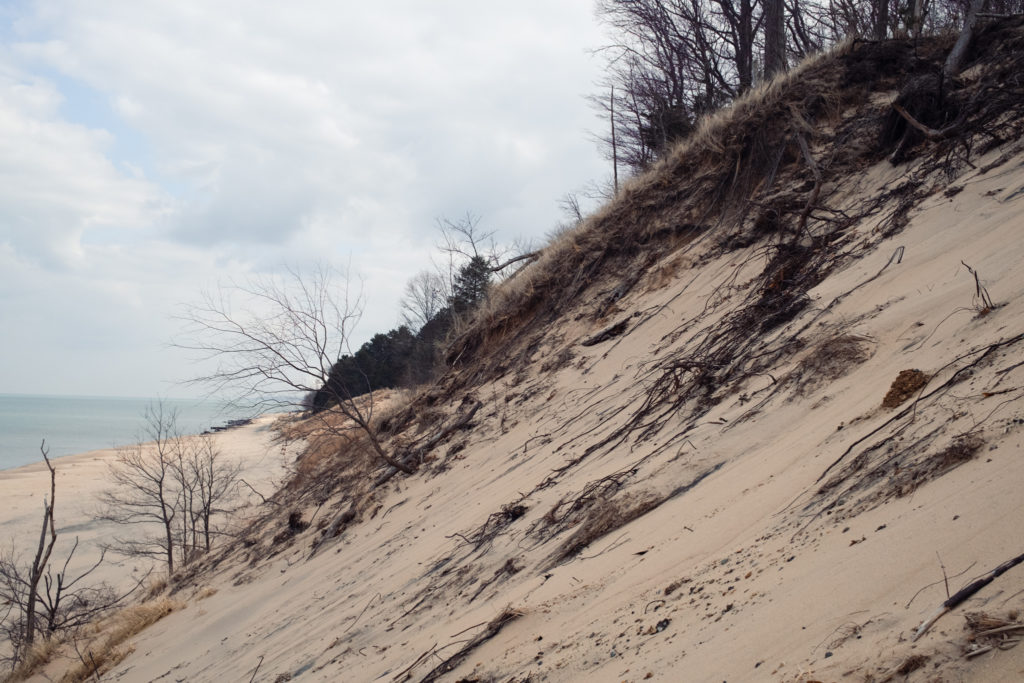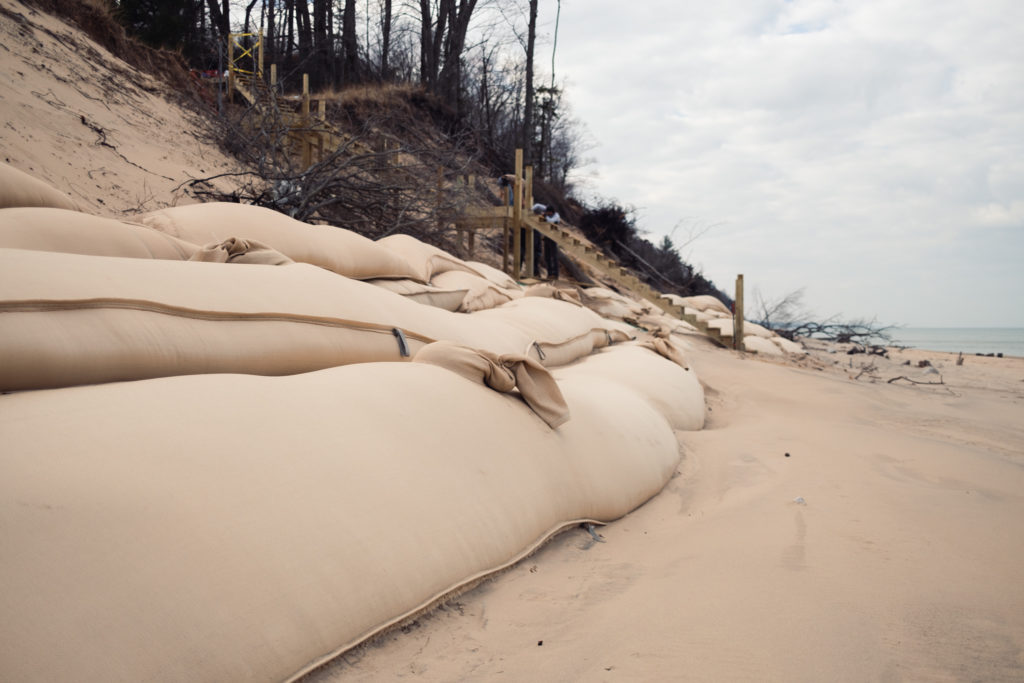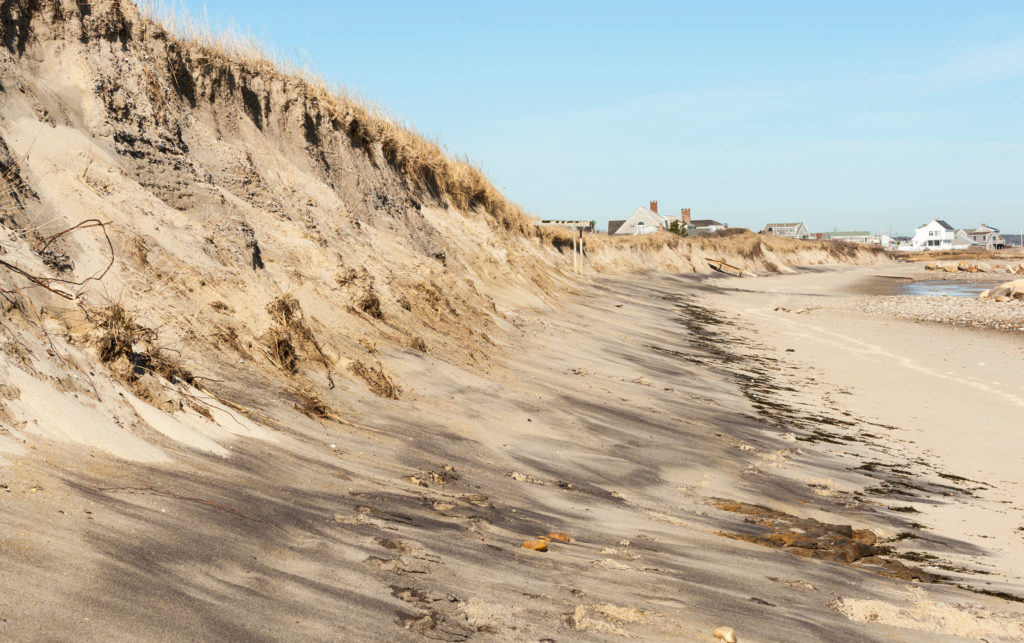Michigan is home to hundreds of thousands of dunes along the Lake Michigan shoreline. Unfortunately, much of this shoreline is also designated as a high-risk erosion area! In these cases, before building a deck or any structure along the shoreline you should first consider dune restoration.
What causes Michigan dune erosion?
Dune erosion along the Lake Michigan coast is due to the lake’s erosive forces, heavy storms, and also human influence. Lake Michigan’s waves constantly beat against the beach dunes, taking the sand with them and contributing to eroding shorelines. Footpaths and other human activity on and around shoreline dunes also play their role in slowly but surely eroding these natural attractions.
What is dune restoration?
Dune restoration is the solution to the erosion of dunes along the coast. Dune restoration refers to the process of anchoring dune sand in place, nourishing the dune with sand backfill where needed, and re-establishing natural vegetation. This is a natural, soft solution to dune erosion.
Dune restoration usually takes place after a form of revetment has been installed and the toe of the dune is secured: this is a key stabilizer for allowing stairs and access back down to the beach. To aid in the restoration process and allow for new vegetation to thrive and stabilize the dune, our team also offers cleanup of excess debris on the beach and dune.

Why are sand dunes important? What role do sand dunes play?
Sand dunes act as a natural barrier against erosion caused by waves, winds, and storms, so restoring them is an important process. Not only do they protect homes and properties on the lakeshore from erosion destruction, but they are home to diverse wildlife and are an important part of the beauty of the Great Lakes State! You may also choose to restore the dunes on your property for your own purposes: whether for aesthetics, increasing property value, or simply planning ahead. In any case, we’ll help you bring life back to your beach.
How to Save and Rebuild your Sand Dunes
The first step to saving your sand dunes is to secure the toe of the dune. Stabilizing the dune will help your other erosion control efforts succeed. Depending on the level of erosion taking place, other protective measures must follow, like installing fencing, planting vegetation, and creating safe footpaths to prevent further erosion damage.
How to prevent sand erosion
There are many protective measures you can take to control shoreline sand erosion on your dunes. These include vegetation, geotextile tube sandbags, seawalls, erosion control blankets, fencing, and more. The key to effective prevention of sand erosion is reducing the impact of the wind and waves and ensuring that the sand is anchored in place. Once these protective measures are implemented, then dunes, beaches, and bluffs can be backfilled to provide support and extra material for the dune to return to its natural angle of reposition. However, it is important to note that where erosive forces are severe, you may only be able to provide a temporary fix.
Control sand erosion on your property

How to plant dune grass
An important step of erosion prevention is planting grass vegetation to protect the sand dunes. Where vegetation is needed for stabilization, it is best to plant native dune grass seed that is strong enough to anchor the dune sand in place. We install dune grass plugs that work well in dune sand. Once this dune grass is established, it stabilizes the sand movement on the dune so that it is less susceptible to collapsing and moving.
Where there is erosion in clay and soil, the hydroseeding process is utilized to apply a mixture of grass seed, mulch, and soil amendments. This quick installation of fast-growing seed ensures that erosion prevention can get started right away.
Sand Dune Regeneration
Taking erosion control measures as soon as possible is always easier than having to rebuild a severely damaged dune. However, if your sand dunes need to be rebuilt, you will want to follow the same method of stabilizing the toe of the dune, utilizing backfill to build it back to its natural angle of reposition, and establishing dune grass vegetation. Keep in mind that the regeneration or dune nourishment process can get expensive depending on the extreme measures needed.

